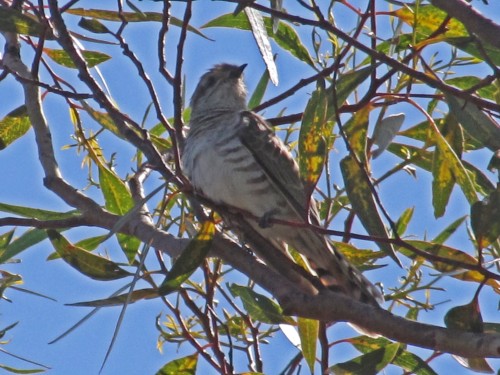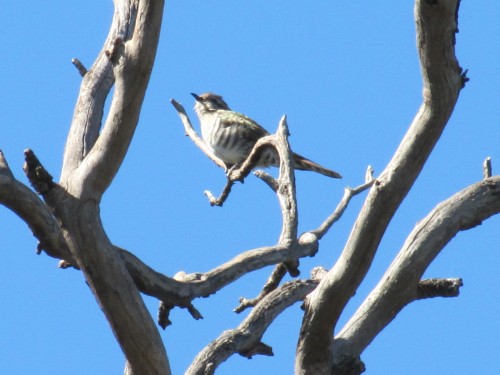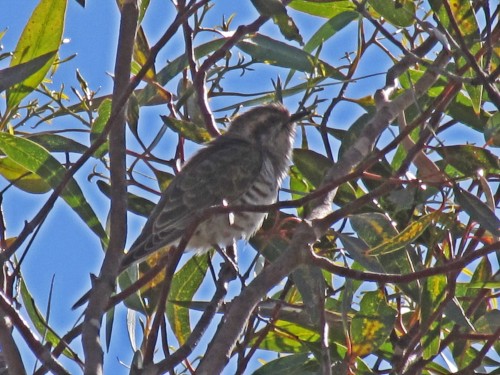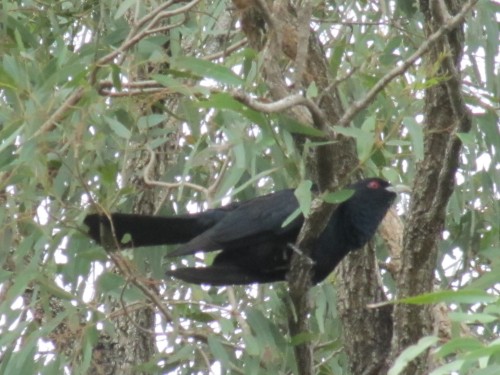Spring – where are you?
It is supposed to be spring here in southern Australia.
The calendar says so, but the weather is not cooperating. Since the beginning of “spring” at the start of September, the weather has been anything but spring-like. In fact, it has been decidedly wintery for the whole month. And August was no better. This year both August and September (so far) have been like the winter we didn’t have earlier on. We had more than double our monthly average rainfall in August and this month looks like going the same way.
To be fair – the earlier months this year were very dry. Large parts of South Australia were heading for a drought, along with other parts of eastern Australia which are still in severe drought. The farmers need all the rain they can get to establish their crops and pastures. The environment also needs the seasonal rains. During the earlier parts of winter, we had very cold nights and lovely sunny days. Now we still have very cold nights – and cold showery days as well. It hasn’t been good weather to get out birding.
A sign of Spring on the way?
A few days ago – on a brief few moments out in the garden between showers and wind gusts – I managed to both hear, and then get good views of, a Horsfield’s Bronze-cuckoo (see photo above). This species spends autumn and winter in the north of Australia and migrates south to breed around this time of the year.
The 14 species of cuckoos present in Australia are parasitic breeders. They lay their eggs in the nests of other birds, including thornbills, wrens and a range of other species. The parent cuckoos leave all the incubation, feeding and raising of the young to the host species. You could say that they have perfected the art of “out-sourcing” parenthood.
Further reading:
Is that terrible noise actually a bird call?
I am writing this while visiting my son and family in Sydney. We do this several times every year and really enjoy the times we spend with our two grandchildren. It always affords me good opportunities to see birds here, on the journey over from South Australia, and during the return trip. On the first Saturday we were here, my son was washing the car in the back yard and I was there chatting with him. I also had an eye on the children performing on the trampoline. We all stopped what we were doing when we heard a bird call. My first thought was, “Is that terrible noise actually a bird call?
I could see the two birds in question in the street tree a few metres away. Although they were high up in the tree, I had a clear view of them. i didn’t have my camera with me – it was in our locked car 30 metres away – nor did I have my binoculars – which were also in the car. It didn’t matter; I instantly identified the birds as Channel-billed Cuckoos. This was the first time I had actually seen this species, so it counted as a lifer.
I was able to watch them for about a minute as they called raucously. Various other species were mobbing them, trying to get them to fly away. These included Noisy Miners, Rainbow Lorikeets, Australian Magpies, Pied Currawongs and several Australian Ravens. These latter three are all hosts to this cuckoo species, so I am not surprised that they were keen to see them off elsewhere.
During our four weeks here in Sydney I have seen this species several more times, and heard them calling around here on many more occasions. I have learned that although they are not a nocturnal species, they will often call during the night during the breeding season. That must be very annoying to anyone trying to sleep. Thankfully, we do not have this species where I live in South Australia.
You can learn more about this parasitic species and see a photo of it on the Birds in Backyards site. There is also a short sound recording of the call.
Good birding,
Trevor
An early Horsfield’s Bronze-cuckoo
I meant to write this post about two weeks ago. I have been distracted by other things; it happens.
First thing one morning just on two weeks ago I was on my way out and I heard the distinctive call of a Horsfield’s Bronze-cuckoo. I was running late for a meeting so I didn’t have time to track it down and get a photo but I know its call from years of hearing it around our home and garden. The photos I have shared today were taken some time ago and are not brilliant, but they give you a general idea of the appearance of this species.
What was interesting about this record is the early nature of the visit in late June. Most of the cuckoos we see and hear on our property are later in the year, especially around spring time when many species are nesting. I have also been reading quite a few reports online by other birders of various cuckoos appearing in southern Australia in recent weeks. One field guide I consulted claims that this species migrates to southern Australia and breeds from June to March, so it is not really all that early after all.
Sometimes I wonder if our birds actually read the field guides and follow the instructions therein.
Spring is coming
I think spring must be on its way here in South Australia.
After one of the wettest and coldest winters on record the sunny days have arrived.
And so have the cuckoos.
Over recent days we have had a Horsfield’s Bronze-cuckoo calling from various spots in our garden. This is always a good indicator that many of the other species are preparing to breed – or already have their nests ready for the spring breeding season.
The various cuckoos which visit our garden will lay their eggs in the nets of weebills, thornbills, honeyeaters and a range of other species as the opportunity arises.
Other species I have recorded over the years include:
- Pallid cuckoo
- Shining Bronze-cuckoo
- Fan-tailed cuckoo
Eastern Koel at Mt Annan Botanic Gardens
One of the more delightful sightings during our recent visit to the Mt Annan Botanic Gardens in Sydney was this male Eastern (Common) Koel. This is one species I’ve often heard on my visits to family in Sydney – but rarely seen. It’s quite common around suburban Sydney – it is just that it has eluded my binoculars on most occasions – and all previous sightings I didn’t have my camera at the ready. This time was different. It sat calling for a minute or two in full view of my camera, and while it is not quite in focus, it is better than no photo at all.
Eastern Koels are found down the eastern seaboard of Australia and across the north coast. Like the cuckoos, it lays its eggs in the nest of other birds. Its name comes from the loud, echoing “ko-ell” call it makes, over and over.





